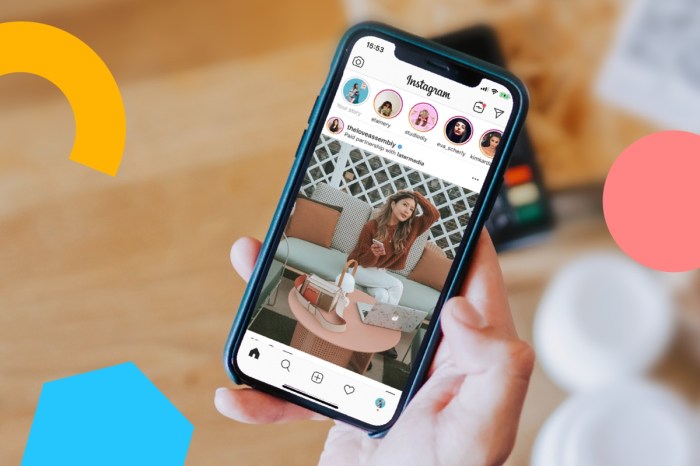Creating Branded Content sets the stage for a dynamic journey into the world of marketing, where creativity and strategy collide to captivate audiences and drive brand success. Dive into the realm of branded content and unlock the secrets to crafting compelling narratives that resonate with your target market.
Understanding Branded Content: Creating Branded Content
Branded content refers to content that is created by or for a brand, with the primary goal of promoting the brand while providing value to the audience. It is a strategic marketing approach that focuses on creating content that resonates with consumers rather than directly selling a product or service.
Differentiation from Traditional Advertising
In contrast to traditional advertising, branded content is more subtle and aims to engage and build relationships with the target audience. Instead of interrupting consumers with overt promotional messages, branded content seeks to entertain, educate, or inspire them in a way that aligns with the brand’s values and identity.
Benefits of Branded Content
- Enhanced brand awareness: By creating valuable and engaging content, brands can increase their visibility and reach a wider audience.
- Building brand loyalty: Branded content helps foster stronger connections with consumers, leading to increased brand loyalty and repeat business.
- Improved credibility and trust: Providing valuable content can position a brand as an authority in its industry and build trust with consumers.
- Increased engagement: Branded content often generates higher levels of engagement compared to traditional advertising, as it focuses on providing value to the audience.
Types of Branded Content

When it comes to branded content, there are various forms that brands can utilize to engage with their target audience. From videos to articles to social media posts, each type of branded content serves a specific purpose in reaching and resonating with consumers.
Videos, Creating Branded Content
Videos are one of the most popular forms of branded content. Brands can create engaging video content such as commercials, product demos, tutorials, or behind-the-scenes looks. For example, Nike’s “Dream Crazy” campaign featuring Colin Kaepernick sparked conversation and connected with audiences on a deeper level.
Articles
Brands often create articles to provide valuable information, insights, or storytelling related to their products or industry. These articles can be published on their website, blogs, or third-party platforms. An excellent example is Airbnb’s “Airbnbmag” which features travel guides, local experiences, and stories from hosts and guests.
Social Media Posts
Social media is a powerful platform for branded content due to its wide reach and engagement potential. Brands can share posts, photos, stories, or live videos to connect with their audience in a more casual and interactive way. Wendy’s Twitter account is a prime example of successful branded content on social media, with its witty and humorous posts resonating with younger audiences.
Podcasts
Podcasts have gained popularity as a form of branded content, allowing brands to share valuable insights, interviews, or entertainment with their audience. For instance, Mastercard launched “Fortune Favors the Bold,” a podcast series exploring the future of digital payments and financial technology.
Infographics
Infographics are visual representations of information or data, making complex topics easier to understand and share. Brands use infographics to educate, inform, or entertain their audience. The infographic campaign by Dove on body positivity and self-esteem is a notable example of impactful branded content.
Interactive Content
Interactive content such as quizzes, polls, games, or augmented reality experiences engages the audience and encourages participation. Brands like Starbucks have successfully used interactive content to create personalized experiences and drive user interaction.
Creating Engaging Branded Content

To create engaging branded content that resonates with the target audience, it is essential to focus on authenticity, storytelling, and relevance. By crafting content that speaks directly to the interests and needs of your audience, you can establish a meaningful connection that drives engagement and loyalty.
Importance of Storytelling in Branded Content
Storytelling is crucial in branded content as it allows brands to connect with their audience on a deeper level. By weaving narratives that evoke emotions and resonate with the values of the target audience, brands can create a memorable and impactful experience. Through storytelling, brands can humanize their message and build trust with consumers.
- Use relatable characters and scenarios to make your brand story more compelling.
- Create a consistent brand voice and tone that aligns with your storytelling approach.
- Incorporate visuals, such as videos and images, to enhance the storytelling experience.
- Focus on the emotional impact of your story to create a lasting impression on your audience.
Remember, a well-crafted story can leave a lasting impression on your audience and differentiate your brand from competitors.
Maintaining Authenticity in Branded Content
Authenticity is key to building trust and credibility with your audience. To maintain authenticity in branded content, it is important to stay true to your brand values and voice while also being transparent and genuine in your messaging.
- Know your audience and tailor your content to their preferences and interests.
- Avoid using overly promotional language and focus on providing value to your audience.
- Engage with your audience through meaningful conversations and feedback to build a genuine connection.
- Be honest and transparent in your communication to establish trust with your audience.
Leveraging Influencers in Branded Content
In today’s digital age, influencers play a crucial role in the success of branded content. These individuals have a loyal following on social media platforms, making them valuable partners for brands looking to reach a specific target audience in an authentic way.
Identifying the Right Influencers
When selecting influencers for a branded content campaign, it’s essential to consider the relevance of their content to your brand, the size and engagement of their audience, and their overall brand image. Look for influencers whose values align with your brand’s values to ensure a seamless collaboration.
- Consider the influencer’s niche and expertise to ensure they can effectively promote your brand.
- Review the influencer’s engagement rate and audience demographics to determine if they align with your target market.
- Examine the influencer’s past collaborations and overall brand image to assess their credibility and authenticity.
Collaborating with Influencers Effectively
To maximize the impact of your branded content campaign with influencers, it’s crucial to establish clear objectives, communicate effectively, and build a strong relationship with the influencer. Here are some strategies for effective collaboration:
- Set clear goals and expectations for the partnership to ensure both parties are aligned on the campaign’s objectives.
- Provide influencers with creative freedom to incorporate your brand message authentically into their content.
- Establish open communication channels to address any issues promptly and ensure a smooth collaboration process.
- Measure the success of the campaign using key performance indicators (KPIs) to evaluate the impact of the influencer’s content on your brand’s objectives.
Measuring the Success of Branded Content
In order to determine the effectiveness of branded content, it is crucial to track key metrics that provide insights into how well the content is performing. By analyzing these metrics, brands can make informed decisions on how to improve their content strategy and achieve better results.
Key Metrics to Track
- Engagement Metrics: Measure the level of audience interaction with the content, including likes, comments, shares, and click-through rates.
- Reach and Impressions: Monitor the number of views and exposure the content receives to gauge its effectiveness in reaching the target audience.
- Conversion Rates: Track the percentage of conversions generated by the content, such as leads, sales, or sign-ups.
- Brand Lift: Assess any changes in brand awareness, perception, or consideration resulting from the branded content.
Tools and Methods for Analysis
- Google Analytics: Utilize this tool to track website traffic, user behavior, and conversions related to branded content.
- Social Media Insights: Platforms like Facebook, Instagram, and Twitter offer analytics tools to measure the performance of branded content on their platforms.
- Surveys and Feedback: Gather direct feedback from the audience through surveys to understand their perceptions and preferences regarding the branded content.
Iterating and Improving Branded Content
- Use A/B Testing: Experiment with different variations of content to identify what resonates best with the audience and drives better results.
- Optimize : Implement strategies to improve the visibility and searchability of branded content, leading to increased organic traffic.
- Listen to Audience Feedback: Take into account feedback and performance data to make informed decisions on how to refine and enhance future branded content initiatives.
